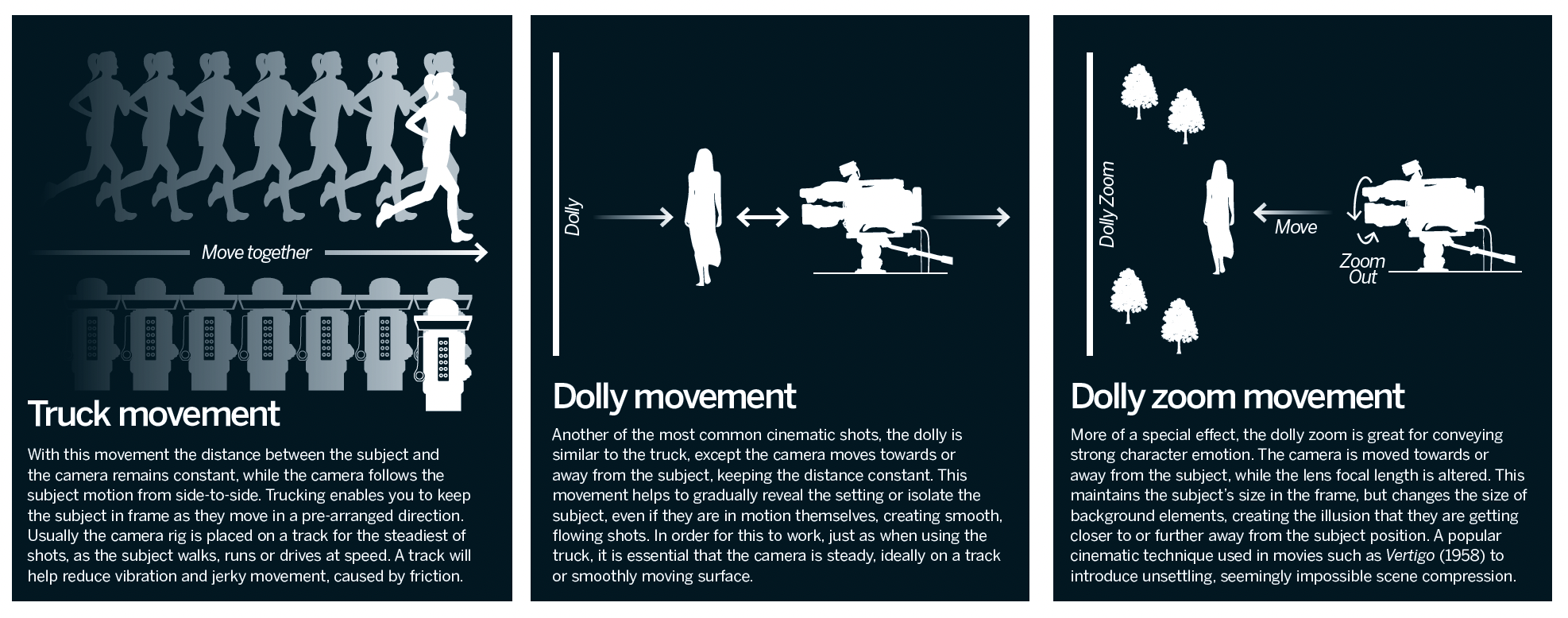Photography cheat sheet: 3 essential camera movements for filmmaking
Learn to create drama with your framing and camera movements and understand how composition and focus come into play when recording video

The standard practices of filmmaking composition are not too different from those of still photography. The rule of thirds still applies, as do leading lines and the golden ratio. The only difference is that, rather than framing a single shot, you have to maintain this arrangement for the duration of a video clip.
This does introduce some unique challenges, especially when you consider the need to hold focus and keep a steady shot. Having a clear plan of the shots you need is a huge advantage.
Read more: The best camera for video
This forethought allows you to visualize which direction you need to move the camera, and how quickly, to keep the subject perfectly framed and in focus. It sounds like a simple case of following the subject with the camera, but you have to consider how you will need to manipulate the camera position to maintain continuity. You won’t always be moving across a flat surface so you’ll need to practice a sequence of movements, and memorize it.
On top of this, don’t forget about dynamic framing – moving the camera for special effect. Filmmaking is all about telling a story, so you don’t want to merely frame the subject, you want to interact with them. This is a third element to videographic composition, which is missing from most still images.
How you alter the distance between the camera and subject during the clip controls how the viewer feels they are interacting with what they are seeing. Meanwhile, although holding the focus on the subject is desirable in many cases, shifting the focus point is a great way to tell the viewer what they need to be looking at and when.

Truck movement
With this movement the distance between the subject and the camera remains constant, while the camera follows the subject motion from side-to-side. Trucking enables you to keep the subject in frame as they move in a pre-arranged direction. Usually the camera rig is placed on a track for the steadiest of shots, as the subject walks, runs or drives at speed. A track will help reduce vibration and jerky movement, caused by friction.
Dolly movement
Another of the most common cinematic shots, the dolly is similar to the truck, except the camera moves towards or away from the subject, keeping the distance constant. This movement helps to gradually reveal the setting or isolate the subject, even if they are in motion themselves, creating smooth, flowing shots. In order for this to work, just as when using the truck, it is essential that the camera is steady, ideally on a track or smoothly moving surface.
Dolly zoom movement
More of a special effect, the dolly zoom is great for conveying strong character emotion. The camera is moved towards or away from the subject, while the lens focal length is altered. This maintains the subject’s size in the frame, but changes the size of background elements, creating the illusion that they are getting closer to or further away from the subject position. A popular cinematic technique used in movies such as Vertigo (1958) to introduce unsettling, seemingly impossible scene compression.
Read more
The best cinema cameras
Mirrorless vs cinema camera for video – which is best?
The best hybrid cameras
Get the Digital Camera World Newsletter
The best camera deals, reviews, product advice, and unmissable photography news, direct to your inbox!

Lauren is a writer, reviewer, and photographer with ten years of experience in the camera industry. She's the former Managing Editor of Digital Camera World, and previously served as Editor of Digital Photographer magazine, Technique editor for PhotoPlus: The Canon Magazine, and Deputy Editor of our sister publication, Digital Camera Magazine. An experienced journalist and freelance photographer, Lauren also has bylines at Tech Radar, Space.com, Canon Europe, PCGamesN, T3, Stuff, and British Airways' in-flight magazine. When she's not testing gear for DCW, she's probably in the kitchen testing yet another new curry recipe or walking in the Cotswolds with her Flat-coated Retriever.
